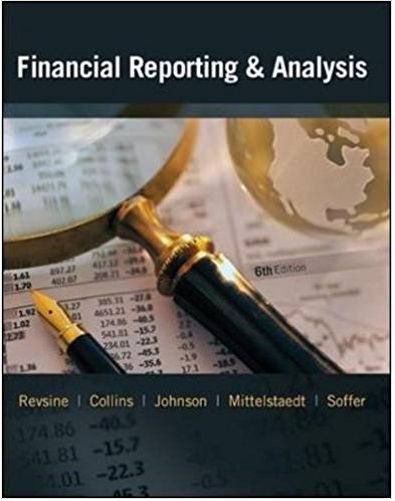Presented below are excerpts from the 2008 annual report of Union Pacific. At December 31, 2008, Union
Question:
At December 31, 2008, Union Pacific had a stock price of $47.80 and 503.2 million shares outstanding. Its balance sheet at December 31, 2008, shows total assets of $39.7 billion and total liabilities of $24.3 billion. Its income statement for the year ended December 31, 2008, shows net income of $2.3 billion and interest expense of 0.5 billion.
4. Retirement Plans
Pension and Other Postretirement Benefits
Pension Plans-We provide defined benefit retirement income to eligible non-union employees through qualified and non-qualified (supplemental) pension plans. Qualified and non-qualified pension benefits are based on years of service and the highest compensation during the latest years of employment, with specific reductions made for early retirements.
Other Postretirement Benefits (OPEB)-We provide defined contribution medical and life insurance benefits for eligible retirees. These benefits are funded as medical claims and life insurance premiums are paid.
Changes in our PBO and plan assets are as follows for the years ended December 31:
-1.png)
Rite Aid Corporation operates retail drugstores in the United States. It is one of the country's largest retail drugstore chains with 3,333 stores in operation as of March 3, Year 3. The com pany's drugstores' primary business is pharmacy services. The company also sells a full selec tion of health and beauty aids and personal care products, seasonal merchandise, and a large private brand product line.
The following condensed information was extracted from Rite Aid's Form 10-K for the fiscal year that ended March 3, Year 3 (all dollars in thousands).
For 2008, the discount rate was based on a Mercer yield curve of high quality corporate bonds with cash flows matching our plans' expected benefit payments. For 2007 and 2006, the dis count rate was based on a hypothetical portfolio of high quality corporate bonds with cash flows matching our plans' expected benefit payments. The expected return on plan assets is based on our asset allocation mix and our historical return, taking into account current and expected market conditions. The actual return (loss) on pension plan assets, net of fees, was approximately (30)% in 2008, 9% in 2007, and 14% in 2006.
Required:
1. What is the amount of assets or liabilities recognized on Union Pacific's balance sheet for its U.S. pension benefits at December 31, 2008?
2. Compute the ending balance of Accumulated Other Comprehensive Income-Actuarial (Gains) Losses for the Pension Plans. The amounts are before taxes. Be sure to label your items and show your computations.
-2.png)
3. Based on information in the pension note, would you expect the pension expense to be higher or lower than its 2008 amount? Explain.
4. Compute the short-term pension risk ratio and the short-term OPEB risk ratio (extended version) as of December 31, 2008.
5. Compute the long-term pension risk ratio and the long-term OPEB risk ratio as of December 31, 2008.
6. Based on your answers to requirements 4 and 5, explain whether Union Pacific has significant pension and OPEBrisk.
Balance sheet is a statement of the financial position of a business that list all the assets, liabilities, and owner’s equity and shareholder’s equity at a particular point of time. A balance sheet is also called as a “statement of financial... Corporation
A Corporation is a legal form of business that is separate from its owner. In other words, a corporation is a business or organization formed by a group of people, and its right and liabilities separate from those of the individuals involved. It may... Discount Rate
Depending upon the context, the discount rate has two different definitions and usages. First, the discount rate refers to the interest rate charged to the commercial banks and other financial institutions for the loans they take from the Federal... Expected Return
The expected return is the profit or loss an investor anticipates on an investment that has known or anticipated rates of return (RoR). It is calculated by multiplying potential outcomes by the chances of them occurring and then totaling these... Portfolio
A portfolio is a grouping of financial assets such as stocks, bonds, commodities, currencies and cash equivalents, as well as their fund counterparts, including mutual, exchange-traded and closed funds. A portfolio can also consist of non-publicly...
Step by Step Answer:

Financial Reporting and Analysis
ISBN: 978-0078025679
6th edition
Authors: Flawrence Revsine, Daniel Collins, Bruce, Mittelstaedt, Leon





